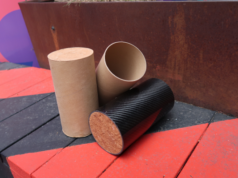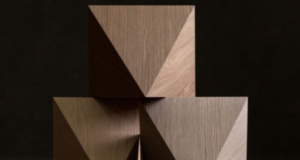
Everyone knows about asbestos, but it’s surprising how few people realise how much of a risk lead paint can be – and just how common it is in older Australian homes.
Everyone’s keen to spruce up old homes for fun and profit. It’s more or less a national sport in Australia these days thanks to renovation shows on TV. And while a lot of us are quick to dive cheerfully into a home renovation, many of those who are new to it (and even some of those who’ve done it for a while) don’t really understand the serious hidden risks they might face.
Everyone knows about asbestos, but it’s surprising how few people realise how much of a risk lead paint can be – and just how common it is in older Australian homes.

What is lead paint?
Lead is a soft metal, and a chemical element that was used in paints for a very long time as an additive. Lead’s highly poisonous if it’s either inhaled or swallowed. If you’re renovating or even just maintaining a home built before 1997, especially those built before 1970, you’ll need to be extremely careful about the way in which you deal with any lead paint (and other lead hazards such as lead-contaminated ceiling dust, or lead dust from leadlighting).
Ingesting lead in the form of dust or flakes from old paint which has either deteriorated or been damaged can lead to lead poisoning, which affects every organ and system in the human body. Long-term exposure to lead is particularly dangerous.
Effects of lead poisoning
Some of the negative health effects of lead poisoning can include:
- Brain damage
- Nephropathy / severe kidney damage
- Blood disorders
- Miscarriage for pregnant women
- Reduced fertility in men
- Hypertension and other cardiovascular issues
- Anaemia
- Permanent cognitive damage for young kids
- Delayed puberty for girls
- Immune deficiency and other complications of the immune system
Lead builds up in people’s bodies, and is stored in bones and teeth. Young kids absorb up to half of the lead they ingest, while for adults the figure’s closer to a tenth.
The current ‘goal’ blood-lead level, according to Australia’s National Health and Medical Research Council (NHMRC) is for people to have below 10 micrograms per decilitre of blood. Recent studies, however, suggest that even less than half of this blood-lead amount (5 micrograms per decilitre or less) can reduce childrens’ IQs and academic achievement, and contribute to attention-related problems and raise the risk of early death from heart attack or stroke in adults.
If you’re worried that you or your family has been exposed to lead, get your doctor to do blood-lead tests for you.
Does my home have lead paint?
The older the paint in your house is, the more likely it is to contain high levels of lead. It’s estimated that there are about 3.7 million homes in Australia built before 1970, and that the vast majority of these contain lead paint (often with a lead content of up to 50%).
The paint used in Australian homes built between 1970 and 1997 was allowed to contain lead levels of up to 1%. This is still a significant amount of lead. To put it in perspective, in the USA the allowable lead content was set at 0.006% back in 1978, and then reduced right down to 0.0009% in 2009.
The amount of lead added to paint in Australia has reduced very significantly over the years. Below is a comparison of the levels of lead added to paint, based on the era in which it was produced:
- Pre-1965: 50%
- 1970-1992: 1%
- 1992-1997: 0.25%
- 1997-today: 0.1% and 0.2% for zinc-based paints
Lead was completely banned as an additive to paint in Australia in 2010, although it’s usually still present in trace amounts (and still limited to 0.1% and 0.2% for zinc-based paints).
How to test for lead paint
If you think you have lead paint in your house (either inside or outside), you’ll need to figure out whether or not it’s a problem, and to make sure it’s properly dealt with.
Lead paint only becomes dangerous when it’s damaged or disturbed although lead paint on chewable wooden surfaces, like window sills or railings, is always dangerous if a child or pet is so inclined to chew on it. If the paint on your walls or mouldings is chalky or flaking, it may be leaving contaminated dust on your children’s hands and around your house or in the soil around your home, potentially exposing your family or pets to it.
There are a few ways to test the lead content of the paint in your home:
- Use a colour-change test kit. These kits are widely available from hardware and paint stores. These sample kits should give an indication of whether or not lead is present at more than 0.5%, but aren’t 100% accurate and occasionally return false negatives and (less commonly) false positives.
- Use a DIY sample kit. Sample kits are designed to allow you to collect samples of paint, soil, dust wipes, rainwater, etc. – which will help determine if your home’s safe for kids. The samples you collect are sent off to a National Association of Testing Authorities (NATA) registered laboratory for accurate testing. These kits are available from The LEAD Group, a health promotion charity and environmental organisation which also provides recommendations on what to do about your kit results.
- Use a portable XRF machine. This machine provides an instant and accurate reading for the lead content of paints, toys, jewellery etc, however you’ll need to call in a professional to do the test for you: in Australia only one man and XRF machine is available: Martin Bagnall of Sampling Technologies in Melbourne. He can be contacted on 1800453394.
How to deal with lead paint
The right course of action to deal with lead paint will depend on your circumstances.
- If the paint is in good condition: Provided that the paint isn’t flaking or chalky and that it’s not at any risk of wear and tear (especially from small children), you can probably leave it alone, or give it a light clean with sugar soap and paint straight over the top of it, providing that you take the right precautions while doing so. Painting over lead paint that’s in good condition will help to seal it over and reduce the risk it poses.
- If the paint is damaged or disturbed: If your paint’s damaged or disturbed – or likely to go that way – then your best course of action is to have it professionally removed. While it’s not impossible to remove lead paint yourself, the process is complicated and can pose serious risks if it’s not done using the right methods and safety gear, and the blood lead levels of all involved aren’t monitored.
Properly removing lead paint and disposing of your contaminated waste is a complicated affair. Obvious measures to remove paint like dry sanding, scraping, sandblasting and using heat guns that don’t have temperature controls (or which are used at an excessively high temperature) are all likely to increase the risk that lead paint poses. If you’re removing any significant amount of paint it’s usually much more sensible to get it done professionally .
There’s an Australian Standard (AS 4361.2 Guide to Lead Paint Management; Part 2 Residential and Commercial Buildings) exclusively dedicated to the safe management and removal of lead paint.
Renovating a house with lead paint
If you’re planning on renovating a house you suspect has lead paint in it, you’ll need to consider how you’re going to manage it. If it’s a smaller job, you may be able to manage the lead paint yourself – the Australian government provides an excellent booklet outlining how to safely deal with lead paint.
If it’s any larger amount, you’re best to get a professional in to manage it – but only a painter with lead paint management training.
For more information about lead paint or how to test the paint, soil, dust, etc in your house and yard, contact either The LEAD Group, Master Painters Australia, Sampling Technologies or find a Green Painter with Lead Paint Management Training.





